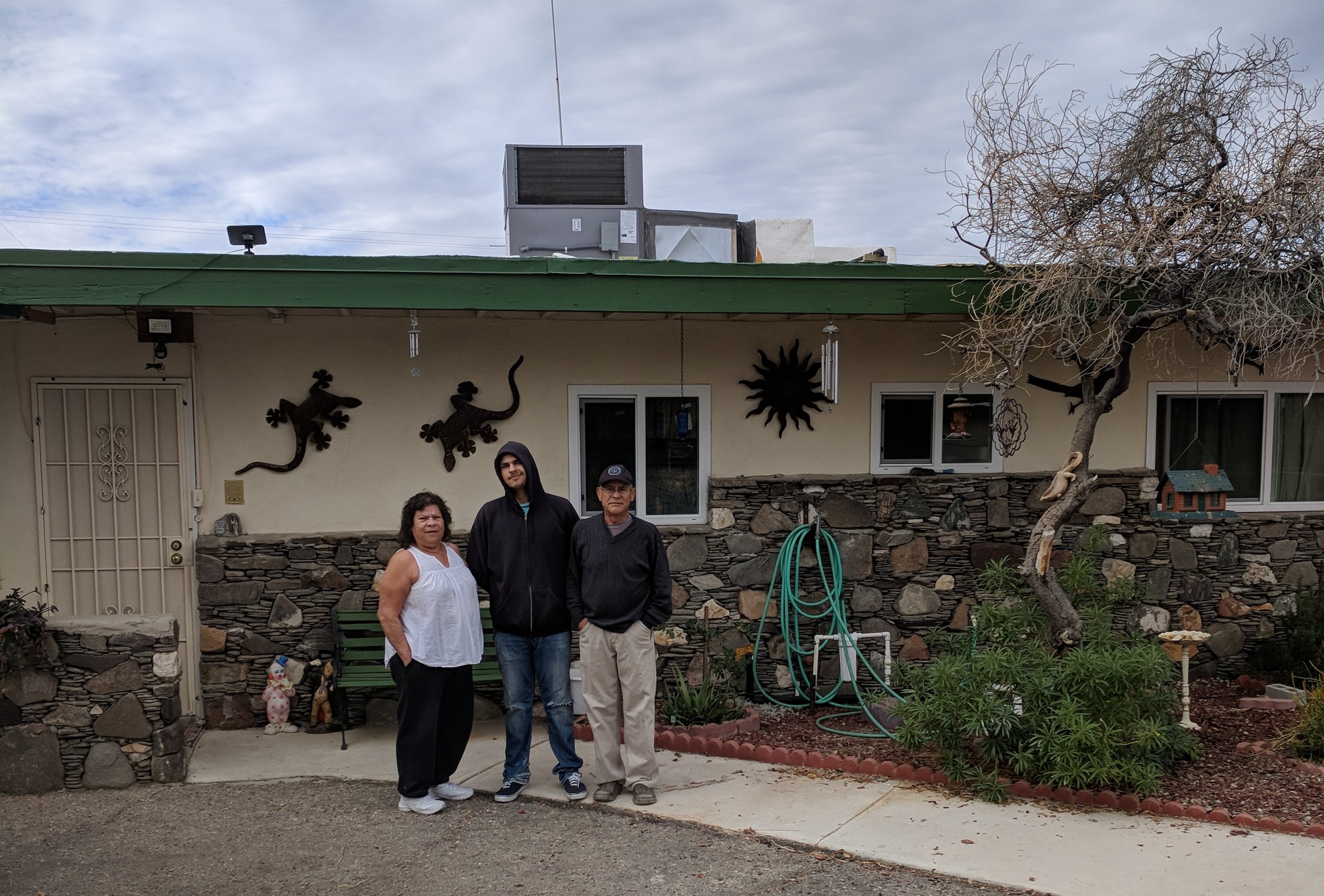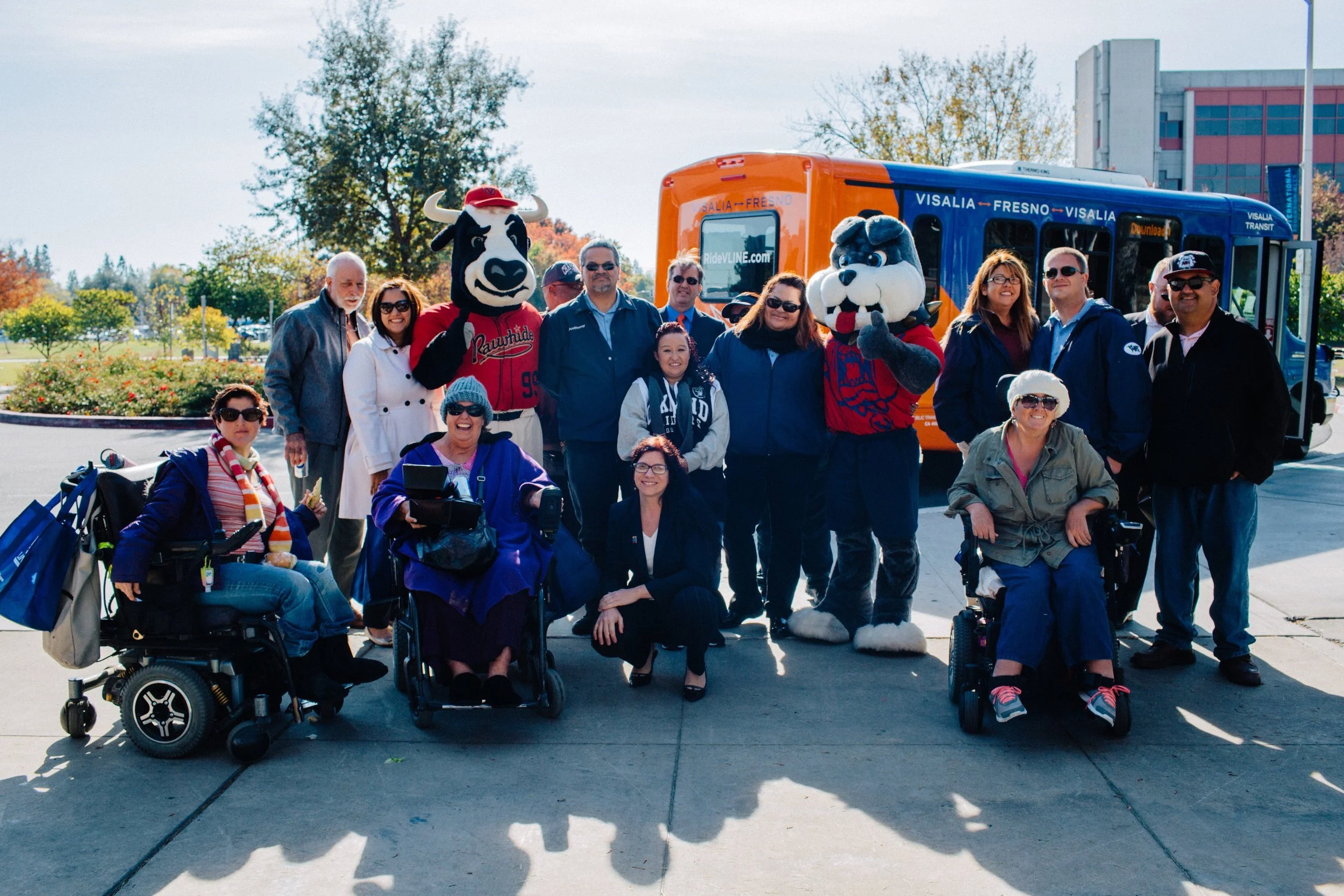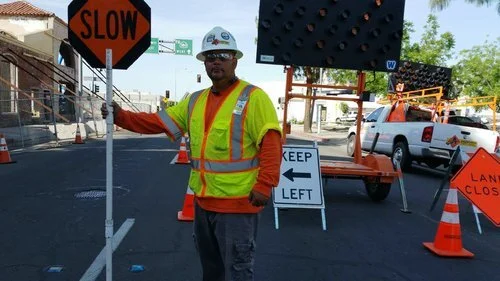The Tenderloin Neighborhood Development Corporation’s (TNDC) commitment to help San Francisco’s low‑income communities thrive by building affordable housing was energized by an electrification project at its SOMA Studio and Family Apartments (SOMA Apartments) in 2020. The effort is supported by a $633,000 award from California Climate Investments through the Department of Community Services and Development’s Low Income Weatherization Program’s (LIWP) Multi‑Family component. With that money and contributions from other local energy efficiency programs, TNDC kept utility bills low for residents while electrifying major central building systems and reducing greenhouse gas emissions. Built in 2003, the SOMA Apartments include 162 homes with more than 60 percent of its households classified as extremely low‑income (earning less than 30 percent of the area median income).
Training and Partnerships Bring Community Solar to Low-income Households
Thanks to $2 million from California Climate Investments through the Low‑Income Weatherization Program, GRID Alternatives Inland Empire is implementing the Community Solar Pilot project, the first community solar array in California specifically designed to benefit low‑income households. Situated on Santa Rosa Band of Cahuilla Indian tribal lands in Riverside County, the Community Solar Pilot project will not only lower energy costs for tribal members and other low‑income households but also provided an opportunity for tribal members to gain valuable experience as solar installation trainees.
No-cost Energy Upgrades Serve Low-income Farmworker Households
Mrs. Rojas and her family now have a solar photovoltaic system and energy efficiency upgrades in their home, including a high efficient air conditioning system, new windows that minimize heat transfer, a smart thermostat, and other measures that reduce energy costs while improving the comfort and livability of their home and its resiliency to climate change.
Solar PV and Energy Efficiency Upgrades Benefit Low-income Residents in San Diego
The Allison Apartments, located in San Diego, were completely renovated and energy conserving refrigerators, LED lighting, and heat pump water heaters funded by LIWP were installed. Another CSD contracted partner, GRID Alternatives, installed an 87-kilowatt rooftop solar PV system and provided a workforce development opportunity to ten trainees, nine of whom subsequently found employment in the solar industry.
Energy Efficiency and Solar PV System Brings Comfort and Affordability to Mecca Household
For years, Irma Vargas’ family of four struggled to pay the high utility bills that come with living on the north shore of the Salton Sea in Mecca while still maintaining a comfortable and healthy home for their children. The family’s limited income made the $400 per month bill nearly impossible during the summer months when temperatures can exceed 110°F in their Riverside County community.
Free Transit Helps Students DASH to Class
The City of Los Angeles Department of Transportation (LADOT) is providing free, safe, and reliable transportation to students across Los Angeles. The “DASH to Class” program allows all K-12, college, and vocational students with a Student Reduced Fare pass to ride free on LADOT Transit’s DASH buses—even for non-school related trips.
Free and Reduced Price Fares Increase Low-income Transit Ridership to Yosemite
Discounted Student Passes Expand Higher-Education Transit Access in North San Diego
Visalia-Fresno Shuttle Serves Students, Travelers, and Residents
Deep in California’s Central Valley, the small City of Visalia took a big step when it started its Visalia-Fresno Shuttle Project in November 2015. The five-stop “V-line,” part of the Visalia Transit system, has a stop for everyone – students headed to Fresno State University, travelers bound for Fresno Yosemite International Airport, even visitors off to see Fresno’s leafy Courthouse Park.
High-Speed Rail Construction Prioritizes Jobs and Sustainability
The High‑Speed Rail Authority is responsible for planning, designing, building and operating the first high‑speed rail in the nation. When complete, it will run from San Francisco to the Los Angeles basin in under three hours, providing a clean alternative to driving or flying. Funded in part by California Climate Investments, the project is already contributing to economic development and a cleaner environment, creating jobs, and preserving agricultural and protected lands.
High-Speed Rail Project Prioritizes Co-Benefits and Sustainable Construction Practices
High-Speed Rail Grade Separation in San Mateo Helps to to Alleviate Congestion
The California High-Speed Rail Authority, the city of San Mateo, and the Peninsula Corridor Joint Powers Board are creating a grade separation project at East 25th Avenue, which will raise the Caltrain tracks and slightly lower East 25th Avenue in San Mateo, reducing idling traffic and air pollution, and improving safety.
High-Speed Rail Project Provides Job Training and Career Advancement Opportunities
Fernando Madrigal, Jr. personifies the opportunities associated with high-speed rail. After 12 years of service with the Marine Corps, Fernando found work as a security guard. He then signed up for a 10-week training program sponsored by PG&E to introduce workers to the various constructions trades.
Pre-Apprenticeship Training Student Lands Job on High-Speed Rail
Rebuilding Healthy Soil on the Urban Edge of Chico
Pamela Posey of Harpos Organics is revitalizing soil health on two acres of walnut trees that have been farmed for more than 40 years. Since her December 2017 purchase of the property, located on the urban edge of Chico, California, Posey has managed the land using healthy soil management practices. In her quest to restore the property from the ground up, Posey turned to the Healthy Soils Program and received a $8,860 grant from California Climate Investments with a $1,500 cost share to achieve her goals of improving the health of the soil and providing increased biodiversity.
Cultivating Healthy Soil Practices in Chico
Chico Flax LLC developed its healthy soils project in collaboration with California State University and the Chico Department of Agriculture to use the 3.75-acre parcel as a regional prototype of sustainable flax production. They coupled the $10,700 grant funds from CDFA with a $5,000 cost-share to implement the three-year healthy soils project.
Cover Crop and Reduced-Till Projects Build Healthy Soils
Charlie Starr grows wine grapes in San Joaquin County. In the past few years, he has been thinking about how to reduce nutrient leaching to groundwater and agricultural dust in the air. The state Healthy Soils Program provided him with the financial incentives to implement conservation management practices on his farmland. His project includes “Cover Crop” and “Reduced-Till.”





















